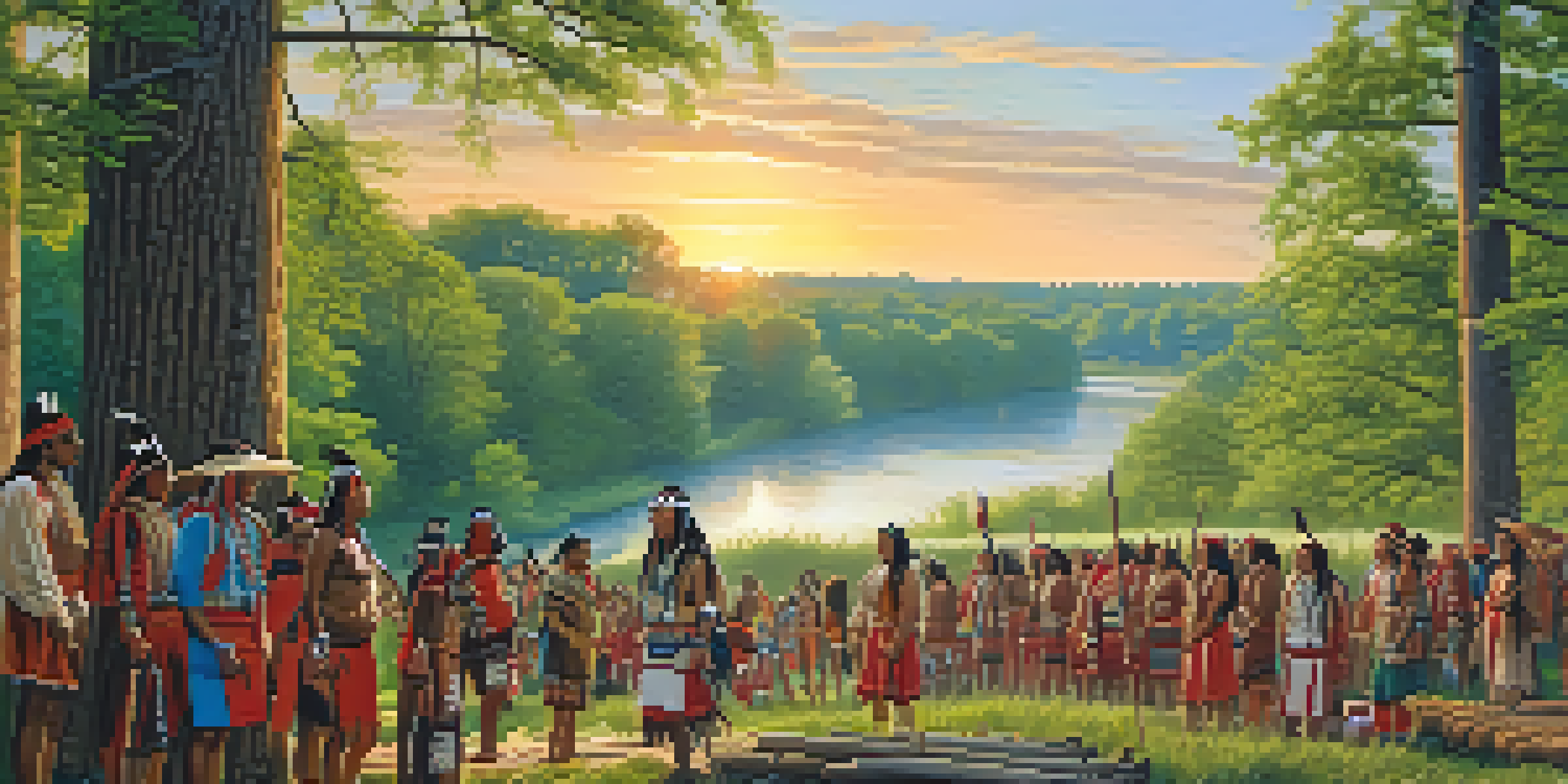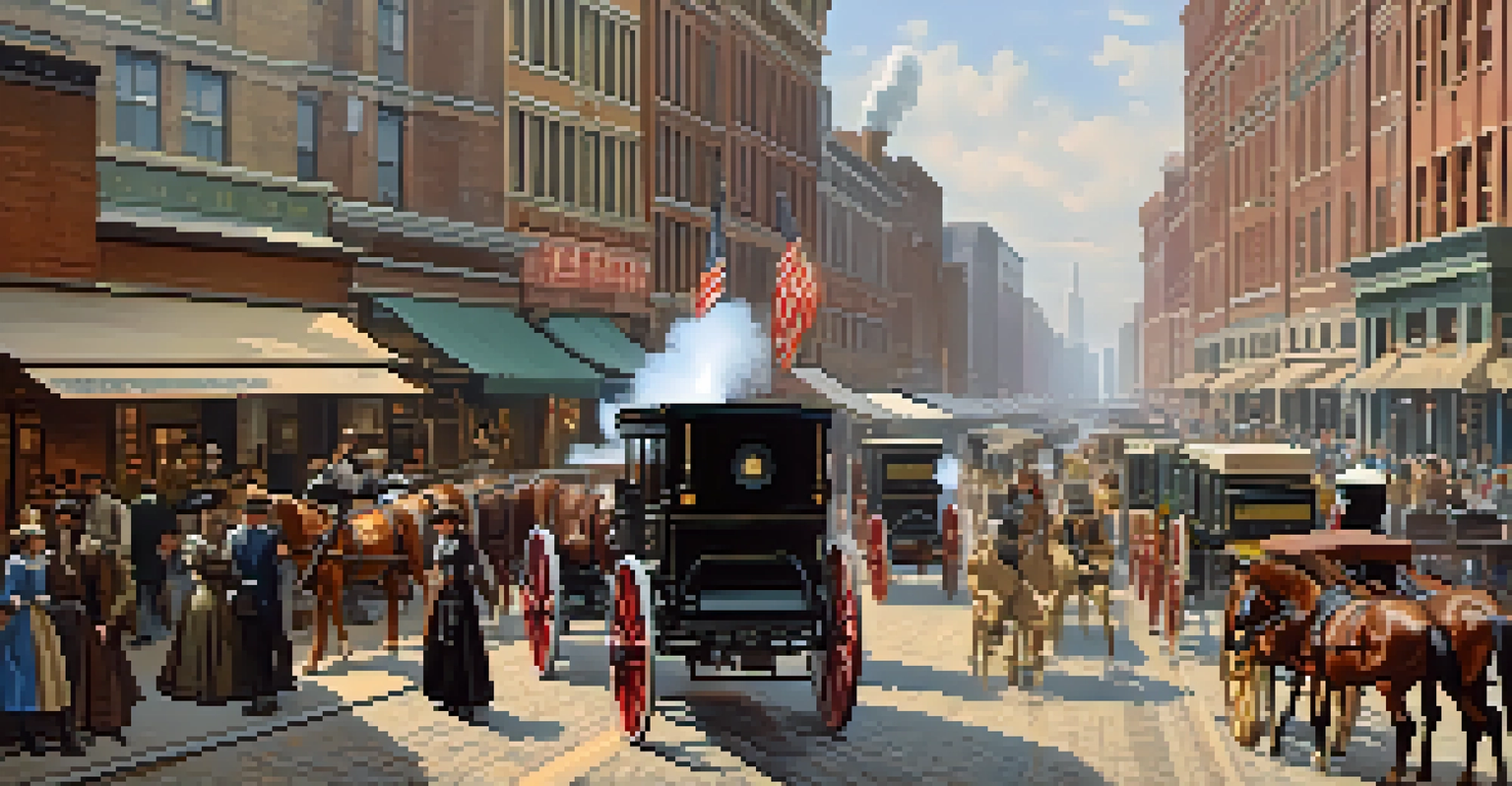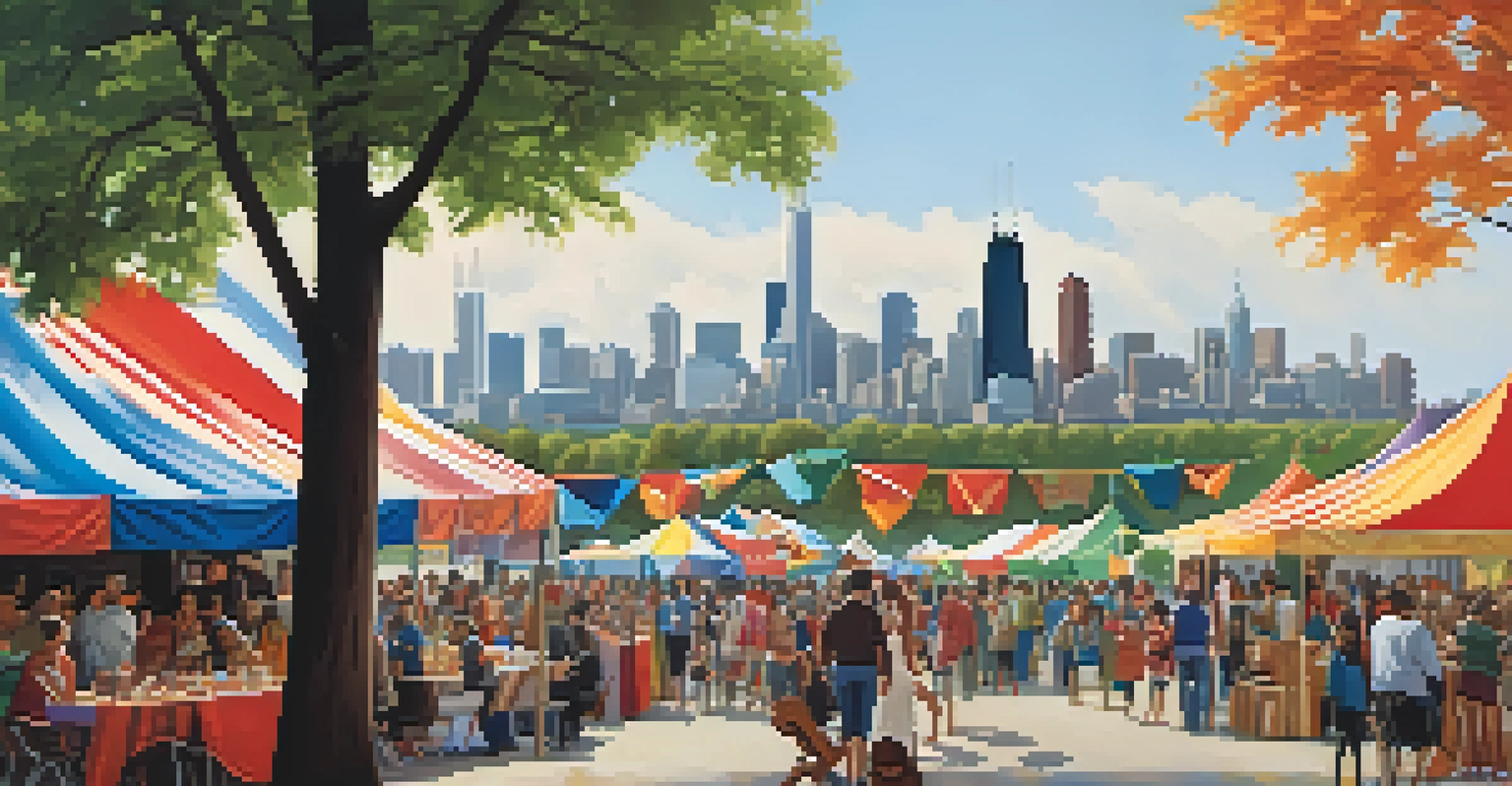Modern Illinois: Historical Events Leading to Current Times

The Foundations: Early Settlements and Native American Tribes
Before Illinois became a state, it was home to diverse Native American tribes like the Illiniwek and the Potawatomi. These tribes had rich cultures and histories that laid the groundwork for future settlements. Their deep connections to the land and resources shaped the region's early identity.
The past cannot be changed. The future is yet in your power.
In the 17th century, European explorers arrived, seeking new opportunities and trade routes. Figures like Jacques Marquette and Louis Joliet mapped the area, bringing both commerce and conflict. Their encounters with Native Americans altered the cultural and social landscape of Illinois.
By the early 1800s, American settlers began to arrive in larger numbers, establishing towns and farms. This influx marked the beginning of significant changes in the region, setting the stage for Illinois' transformation from a wilderness to a burgeoning state.
Becoming a State: The Illinois Statehood Journey
Illinois was officially admitted to the Union on December 3, 1818, becoming the 21st state. This moment was celebrated as a significant achievement for settlers who envisioned a prosperous future. The state's admission was fueled by its rich agricultural potential and strategic location.

The push for statehood was not without challenges, including political debates and conflicts over land rights. Yet, the determination of its residents helped overcome these obstacles. Illinois quickly became a center for agriculture, attracting new settlers who sought to cultivate the fertile lands.
Illinois' Diverse Roots and Growth
Before becoming a state, Illinois was shaped by Native American tribes and European explorers, laying the foundation for its future development.
As a new state, Illinois began to develop its infrastructure, including roads and railways. These advancements not only supported local economies but also facilitated trade, connecting Illinois to major markets across the nation.
The Civil War Era: Illinois' Role in National Conflict
The Civil War (1861-1865) was a pivotal moment in American history, and Illinois played a significant role. The state contributed more than 250,000 soldiers to the Union Army, showcasing its commitment to preserving the nation. Notably, Abraham Lincoln, a resident of Illinois, emerged as a key figure during this tumultuous period.
History is not a burden on the memory but an illumination of the soul.
The war brought both opportunity and hardship to Illinois. While many families lost loved ones, industries flourished with the demand for war supplies. This economic boom laid the groundwork for Illinois to evolve into a manufacturing hub post-war.
Following the war, Illinois experienced a surge in population and urban development. The state became a symbol of resilience and progress, attracting immigrants who sought new opportunities and contributing to its diverse cultural landscape.
Industrial Growth: The Rise of Chicago and Beyond
The late 19th century marked a period of rapid industrial growth in Illinois, particularly in Chicago. The Great Chicago Fire of 1871, though devastating, provided an opportunity for reconstruction and innovation. As the city rebuilt, it became a hotbed for industry and commerce.
Chicago's strategic location as a transportation hub facilitated its growth, connecting the Midwest to national and global markets. The development of railroads and stockyards transformed the city into a center for agriculture, manufacturing, and trade. This economic boom attracted workers from diverse backgrounds, enriching its cultural fabric.
Civil War's Impact on Illinois
Illinois played a crucial role in the Civil War, contributing soldiers and emerging as a manufacturing hub, which influenced its post-war growth.
By the early 20th century, Illinois had established itself as an economic powerhouse. The influx of immigrants and industries not only reshaped Chicago but also influenced the entire state, leading to urbanization and modernization.
The Great Migration: Shaping Illinois' Social Landscape
The Great Migration, spanning from the 1910s to the 1970s, brought a significant demographic shift to Illinois. African Americans migrated from the South to escape racial oppression and seek better economic opportunities in northern cities. Chicago became a primary destination, leading to vibrant communities and cultural movements.
This migration transformed the social landscape of Illinois, enriching its cultural diversity. The contributions of African Americans in arts, music, and politics became integral to the state's identity. From jazz to civil rights activism, these influences shaped a new narrative for Illinois.
However, the migration also brought challenges, including racial tensions and economic disparities. The struggle for civil rights gained momentum, leading to significant changes in legislation and social attitudes. This period was crucial in redefining Illinois as a state committed to equality and justice.
Modern Illinois: Economic Challenges and Innovations
As Illinois entered the 21st century, it faced various economic challenges, including job loss in traditional industries and budgetary issues. The decline of manufacturing and the impact of globalization prompted a reevaluation of the state's economic strategies. Yet, Illinois remains resilient, adapting to changing times.
In response to these challenges, Illinois has embraced innovation and technology. The rise of the tech sector, particularly in Chicago, has attracted startups and entrepreneurs, fostering job creation and economic growth. This shift reflects a broader trend of modernization within the state.
Modern Innovations and Challenges
In the 21st century, Illinois faces economic challenges while embracing technology and innovation to ensure future prosperity.
Moreover, Illinois continues to invest in education and infrastructure, recognizing their importance for future prosperity. By focusing on sustainable development and leveraging its diverse economy, the state aims to build a brighter future for its residents.
Cultural Richness: Illinois Today
Today, Illinois is a tapestry of cultures, traditions, and communities. From the vibrant neighborhoods of Chicago to the serene landscapes of rural areas, the state showcases diversity in every corner. Festivals, art exhibits, and culinary experiences reflect the melting pot of influences that define modern Illinois.
Education and research institutions, such as the University of Illinois, contribute to a thriving intellectual environment. These centers of learning attract students and researchers from around the world, fostering innovation and collaboration. The commitment to education remains pivotal in shaping the state's future.

As Illinois continues to evolve, its rich history and cultural heritage serve as guiding principles. The state's ability to adapt while honoring its past ensures that it remains a dynamic and exciting place to live, work, and explore.